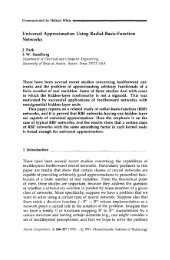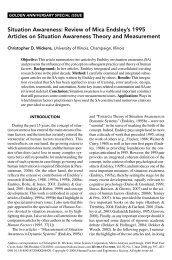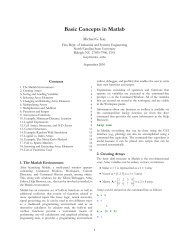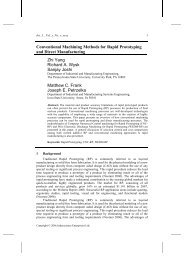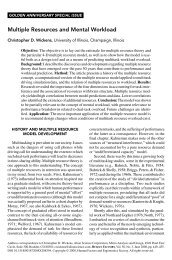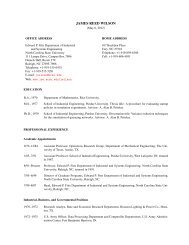Material Handling Equipment - Industrial and Systems Engineering
Material Handling Equipment - Industrial and Systems Engineering
Material Handling Equipment - Industrial and Systems Engineering
You also want an ePaper? Increase the reach of your titles
YUMPU automatically turns print PDFs into web optimized ePapers that Google loves.
9. MH EQUIPMENT SELECTIONTable 12. Pallet Storage ComparisonType of RackBlock SingleStacking DeepDoubleDeepDriveInDriveThroughPushBackPalletFlowSlidingRacksInvestment cost per position* – 1 1.1 1.4 1.4 3 5 7Storage depth per lane 2–10 1 2 5–10 5–10 2–5 2–5 1Inventory level per SKU ≥ 5 < 3 ≥ 5 ≥ 20 ≥ 20 3–10 3–10 < 3All loads accessible No Yes No No No No No YesS/R throughput Good Good Average Average Average Good Excellent PoorFIFO retrieval possible Yes Yes No No Yes No Yes YesVertical honeycomb loss Yes No No Yes Yes No No No* Ratio relative to Single Deep cost (see Gross & Associates’ “Rules of Thumb” for current cost estimates).9. MH <strong>Equipment</strong> SelectionGiven the material flow requirements for one or moves, MHS alternatives can be determined byselecting appropriate MH equipment that, in some way, “satisfies” the requirements.An important issue is the classification level from which the MH equipment is selected:• High Level—categories of equipment, e.g., conveyors, cranes, industrial trucks, positioningequipment• Intermediate Level—equipment types within categories, e.g., chute or roller conveyors,pallet jack or pallet truck industrial trucks• Low Level—equipment models within an equipment type, e.g., an Acme Model X dieselpoweredcounterbalanced lift truck with a rated lift capacity of 5,000 lbs.Figure 8. MHE selection.65



